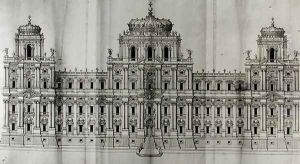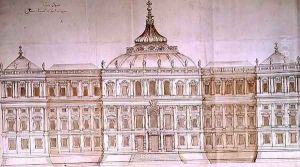Carlo Rainaldi Paintings
Carlo Rainaldi was an Italian architect of the Baroque period, active mainly in Rome. Born in 1611 in Rome, he was the son of another prominent architect, Girolamo Rainaldi, who had a significant influence on his career and style. Carlo was a leading figure in the Roman architectural scene during the mid-17th century and is known for his grandiose yet harmoniously designed churches and public spaces.
Rainaldi's education in architecture was primarily through his father's tutelage and through exposure to the vibrant architectural developments in Rome at the time. He became an esteemed member of the Accademia di San Luca, the prestigious academy of artists and architects in Rome, which further established his reputation.
Among Rainaldi's most famous works are the twin churches of Santa Maria dei Miracoli and Santa Maria in Montesanto, located on the Piazza del Popolo in Rome. These churches showcase his mastery of Baroque spatial dynamics and ornamentation. Rainaldi was involved in numerous other projects, including the design of the facade of the Church of Santa Maria in Campitelli.
His works are characterized by dramatic contrasts of light and shadow, dynamic spaces, and a grand sense of theatricality, which were hallmarks of the Roman High Baroque style. Rainaldi's designs often incorporated classical elements reinterpreted in a contemporary Baroque manner, reflecting the transitional nature of the period in which he worked.
Carlo Rainaldi's career also included urban planning, and he contributed to the layout of significant civic spaces in Rome. His influence extended beyond his lifetime, with many later architects drawing inspiration from his innovative approach to design.
Rainaldi died in 1691, leaving behind a legacy of architectural works that continue to be studied and admired for their beauty and historical significance. His contributions played a pivotal role in shaping the Baroque landscape of Rome, and his works remain integral to the city's architectural heritage.

